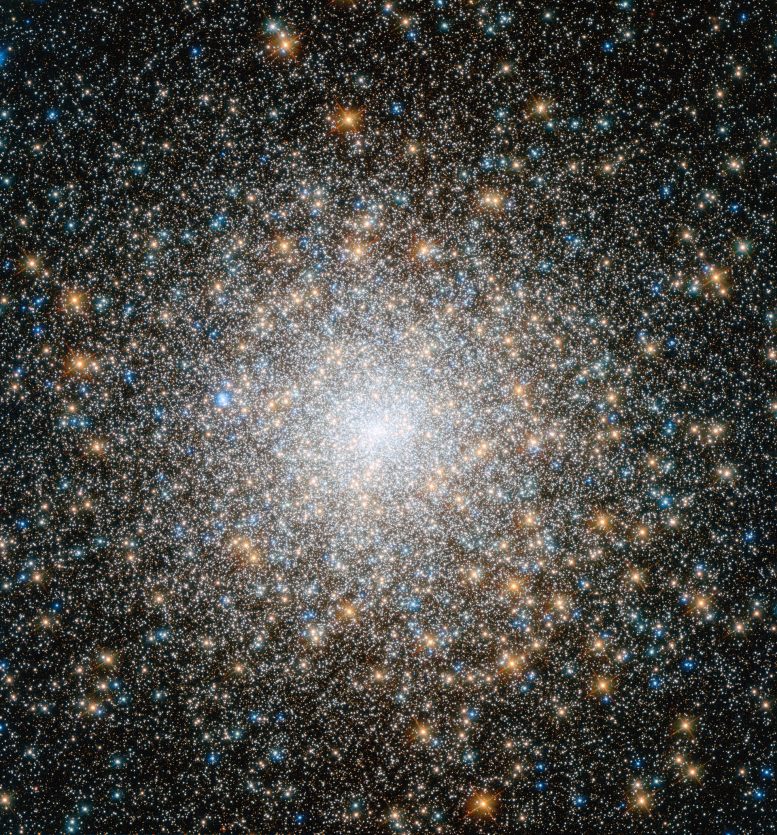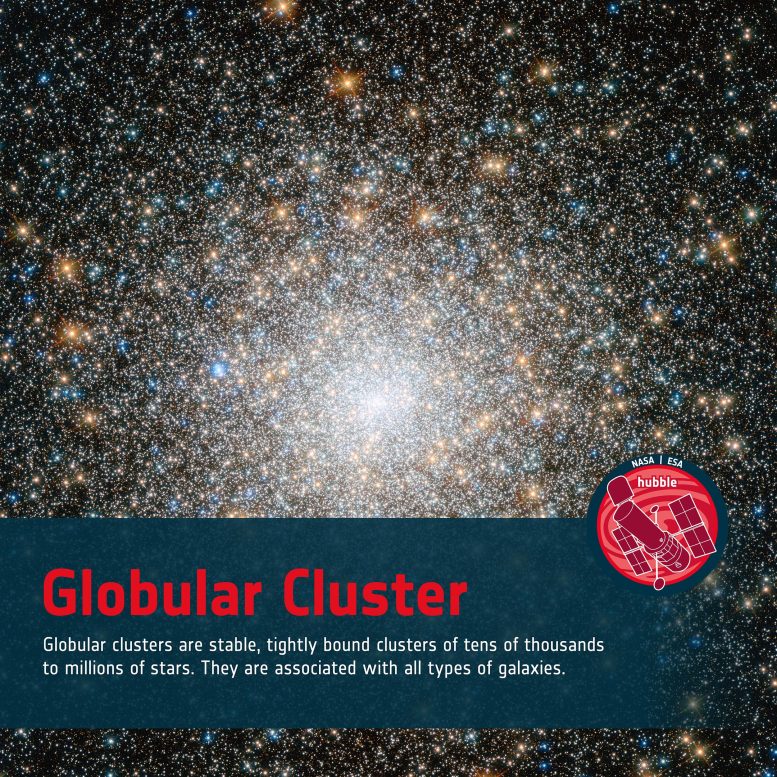
Cet amas d’étoiles, connu sous le nom de Messier 15, est situé à environ 35 000 années-lumière dans la constellation de Pégase (le cheval ailé). Il s’agit de l’un des plus anciens amas globulaires connus, avec un âge d’environ 12 milliards d’années. Crédit : NASA, ESA
Les amas globulaires sont des amas stables et étroitement liés de dizaines de milliers à des millions d’étoiles. Ils sont associés à tous les types de galaxies.
Les amas globulaires sont généralement beaucoup plus grands que les amas ouverts et sont étroitement liés par la gravitation. Ils sont beaucoup plus densément peuplés, avec des populations allant de quelques dizaines de milliers à des millions d’étoiles. L’intense attraction gravitationnelle entre les étoiles serrées les unes contre les autres donne aux amas globulaires leur forme régulière et sphérique. Ils sont peuplés d’étoiles plus vieilles et plus rouges que les amas ouverts (qui pourraient se disperser avant que leurs étoiles ne deviennent vraiment vieilles). Leur attraction gravitationnelle considérable les rend très stables, et ils peuvent donc avoir une durée de vie extrêmement longue, survivant à des milliards d’années. Ils sont associés à tous les types de galaxies, et dans la Milky Way they are found in the halo and the bulge.
All star clusters are of great interest to astronomers, because their constituent stars all formed at approximately the same time and location, and had similar initial composition. Therefore stellar clusters offer unique insights into how stars form and evolve. It is very challenging to observe individual stars within globular clusters, however, as they are so densely packed.
Les amas globulaires sont des amas stables et étroitement liés de dizaines de milliers à des millions d’étoiles. Ils sont associés à tous les types de galaxies. Crédit : ;” data-gt-translate-attributes=”[{” attribute=””>NASA & ESA
Hubble revolutionized the study of globular clusters, as it is almost impossible to distinguish the stars in globular clusters from one another with ground-based telescopes. Hubble has been used to study what kind of stars globular clusters are made up of, how they evolve and the role of gravity in these dense systems.
In 2021, new data from Hubble led to the first measurement of the extent of a collection of black holes in a core-collapsed globular cluster. Scientists were expecting to find an intermediate-mass black hole at the heart of NGC 6397, but instead they found evidence of a concentration of smaller black holes lurking there. This discovery raised the question of whether mergers of these tightly packed black holes in core-collapsed globular clusters may be an important source of gravitational waves.
Hubble was the first telescope to directly observe white dwarfs in globular star clusters, which astronomers reported as the dimmest stars ever seen in a globular star cluster. This study also focused on NGC 6397, one of the closest globular clusters to Earth. By seeing the whole range of stars in this area, researchers garnered new insights into the age, origin, and evolution of the cluster.

Credit: ASA & ESA
The telescope has also contributed to our understanding of a special type of re-invigorated stars in globular clusters, known as blue stragglers. Under certain circumstances, stars receive extra fuel that bulks them up and substantially brightens them. This can happen if one star pulls matter off a neighbor, or if they collide. Blue stragglers therefore appear to regress from ‘old age’ back to a hotter and brighter ‘youth’, gaining a new lease on life in the process.
Hubble’s collection of imagery of globular clusters can be explored here. This includes a stunning image of Messier 15, which is one of the oldest globular clusters known, with an age of around 12 billion years.



